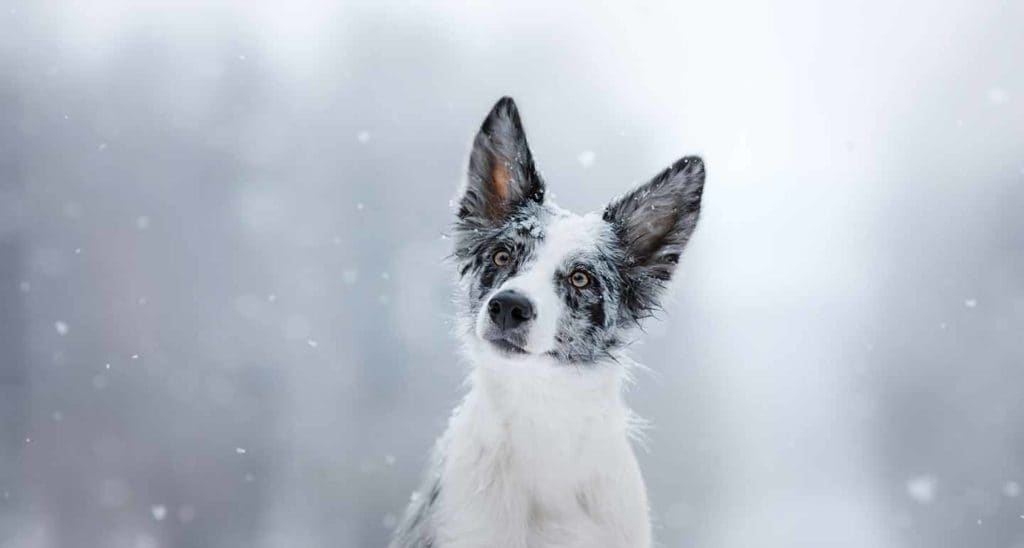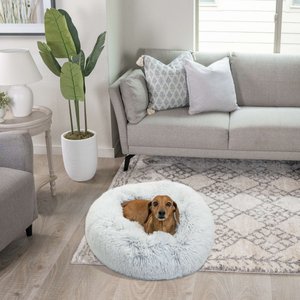If you have any pets that live mainly outdoors, as the weather grows colder, you're probably left wondering how to keep outside dogs warm in the winter—or how to keep outside cats warm in the winter, if you're the pet parent of a feline.
Like many cats and dogs that live in rural locales, Miss Cleo the cat and her canine brother Sid spend their fair-weather days and nights patrolling my property’s acreage, hunting varmints, harassing lizards and insects and taking long naps in the warm sunshine. When the cold weather comes, however, my 6-year-old mixed-breed calico and 3-year-old terrier hunker down in the barn together where it’s safe, cozy and out of the rain and snow.
But are they warm enough?
Since Miss Cleo and Sid are my first outdoor, rodent-dispatching pets, I myself wondered how to keep outside dogs warm in the winter, and outdoor cars as well. In the Pacific Northwest where we live, the cold-season temperatures are relatively mild (albeit wet), but I still wanted to get some expert advice, so I talked to Jessica Romine, DVM, DACVIM, a board certified internal medicine veterinarian at BluePearl Pet Hospital in Southfield, Michigan. She says “too cold” is a relative term that depends on the animals’ breed and age.
“‘Too cold’ depends on the breed, age and size of the pet,” she explains. “For example, small dogs will become colder sooner, and older dogs will have a harder time maintaining their body heat. Breed will also dictate their body type, body fat and haircoat. Pets will also be less tolerant of the cold in wet weather. In general, pets ideally should have access to indoor shelter below about 50 degrees [Fahrenheit], so they can choose a warmer environment if they are getting cold.”
The barn gives my pets a drier, cozier option if needed—but what else could I do to keep my outside cat and outside dog warm in the winter?
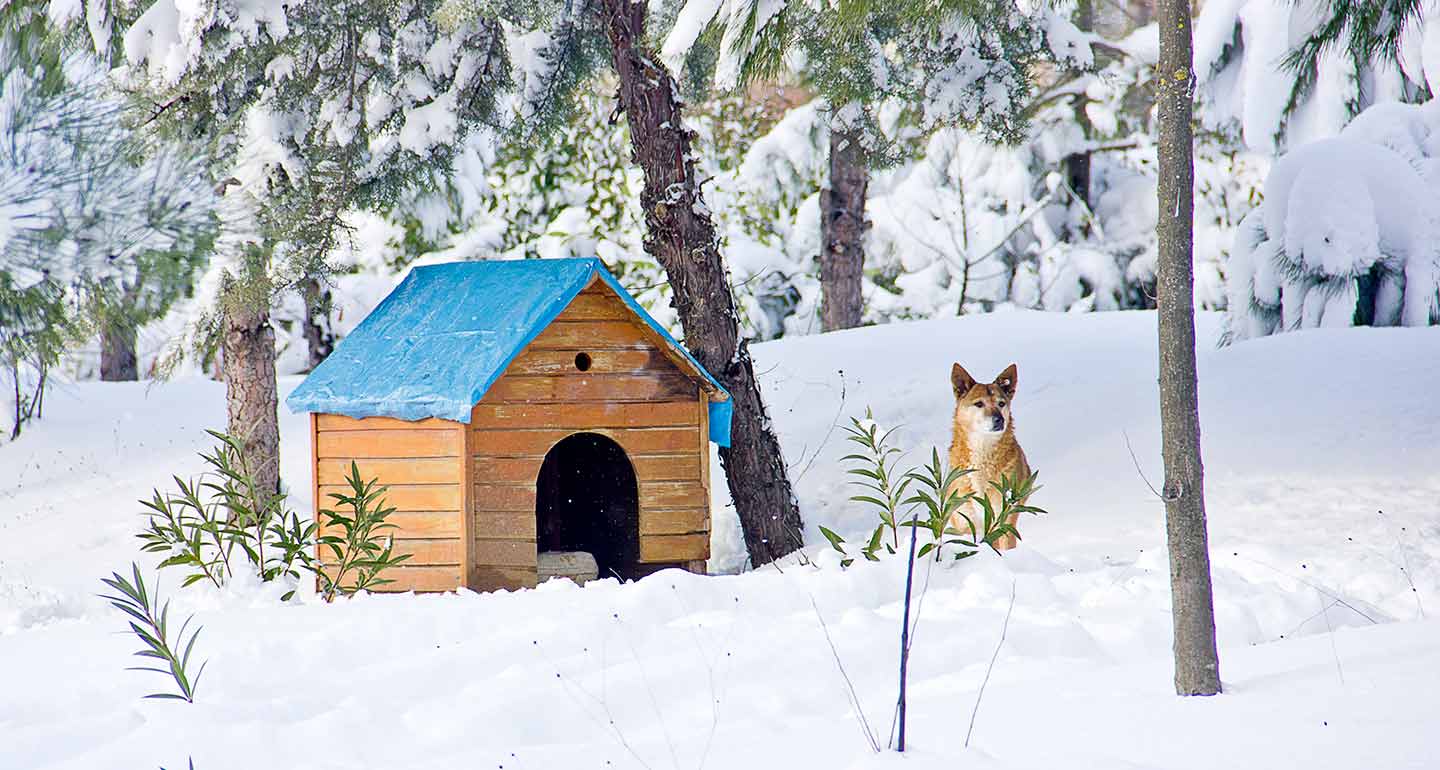
iStock.com/Gogosvm
Dog and Cat Houses
Outside dog and outdoor cat houses, like the Trixie glazed pine dog club house and K&H Pet Products outdoor heated kitty house, are designed to give animals their own little shelter from the weather. Typically made from weatherproof materials like wood, plastic or vinyl, these tiny homes are designed to block wind and keep their occupants dry, Dr. Romine says.
“It is important that they do not allow moisture in,” she says. “This may mean that they need to be raised to prevent mud and flooding, and checked routinely during rain and snow to monitor for leaks. Insulation is also important; clean, dry straw can be a good base, as well as blankets and/or beds to allow for nesting.”
As for square footage, the dog home or outside cat house shouldn’t be too large or too small—but just right.
“The space needs to be large enough for the dog or cat to move around and get in and out comfortably, but not too large,” Dr. Romine says. “Otherwise it will be drafty and not contain their body heat well.”
Heated Beds and Self-Warming Pads
For outdoor cats and dogs who prefer a little extra warmth, heated beds, like K&H Pet Products Deluxe Lectro-Soft outdoor heated pet bed, can be an option—but they may not be practical for every family, Dr. Romine says.
“The biggest concern is that these do require electricity, which may not be safe or practical in an outdoor setting,” she explains. “If one is used [inside their pet house], be sure that there is room for the cat or dog to be in the house without being on the bed, so they can opt to not use it if they get too hot.”
A more practical choice, Dr. Romine says, is a self-warming pad. Options include Best Friends by Sheri Luxury shag donut self-heating orthopedic dog and cat bed and Aspen Pet self-warming pet bed.
“With self-warming pads, the pet’s own body heat is reflected back, conserving that warmth,” she says. “These may be a great option, because there is no external power requirement.”
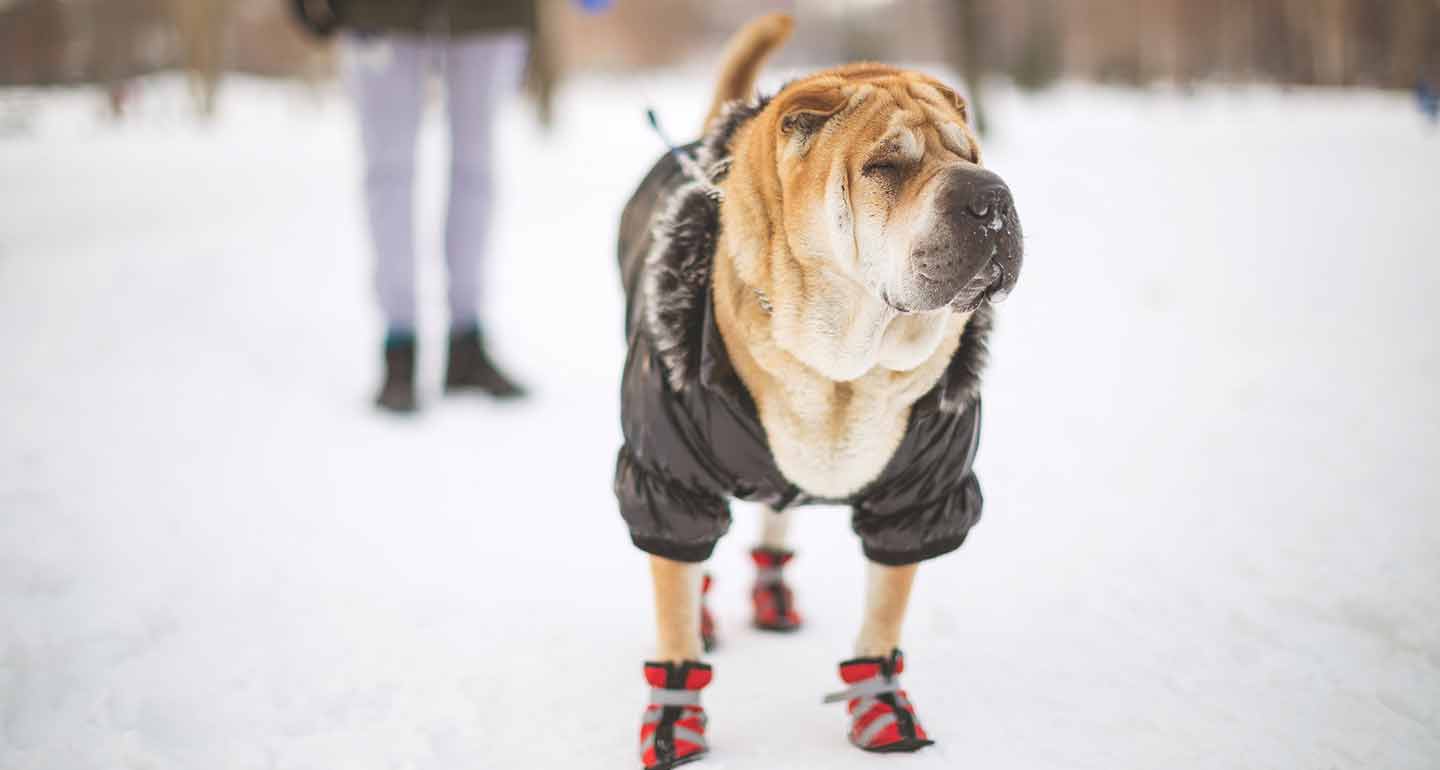
iStock.com/miodrag ignjatovic
Winter Coats
It might seem logical to wrap your outdoor dog (and willing cat) in a thick winter coat or rain slicker, like the Hurtta Rain Blocker dog raincoat, but Dr. Romine suggests you only do so when you’re taking your pals out for supervised playtime or a jaunt through the snow.
“Jackets and coats can be very useful to keep dogs warm when they are going on walks,” she says. “Dogs that have been allowed to acclimate well to colder weather usually develop a nice thick undercoat and often do not need additional layers, but dogs that are predominantly indoors may need some protection, particularly in wet weather.”
“Dogs with a large amount of body surface area and thin hair coats, such as Greyhounds, may benefit more than fluffier breeds like German Shepherds,” she adds.
Learn more about why dogs need coats and sweaters in winter.
She emphasizes that pet parents should not leave harnesses, jackets or coats on their dogs or cats when they aren’t supervised.
“I have seen dogs chew straps off and swallow them, requiring emergency surgery to take out,” she says. “They can also get them partially off, risking choking.”
Fur: Their Natural Insulation
Speaking of winter coats, because a cat’s or dog’s haircoat is an all-natural insulator, Dr. Romine encourages pet parents to let the fur grow during the cold weather months—especially if their pal has a double coat.
“Dog hair is a wonderful insulator, and many breeds have a double coat, with an outer layer of guard hairs to protect from the elements and a downy underlayer to contain heat,” she says. “Ideally, dogs will be allowed to grow their full coats, and dogs with routine exposure to the cold weather will adapt to a greater degree than those kept nearly exclusively indoors.”
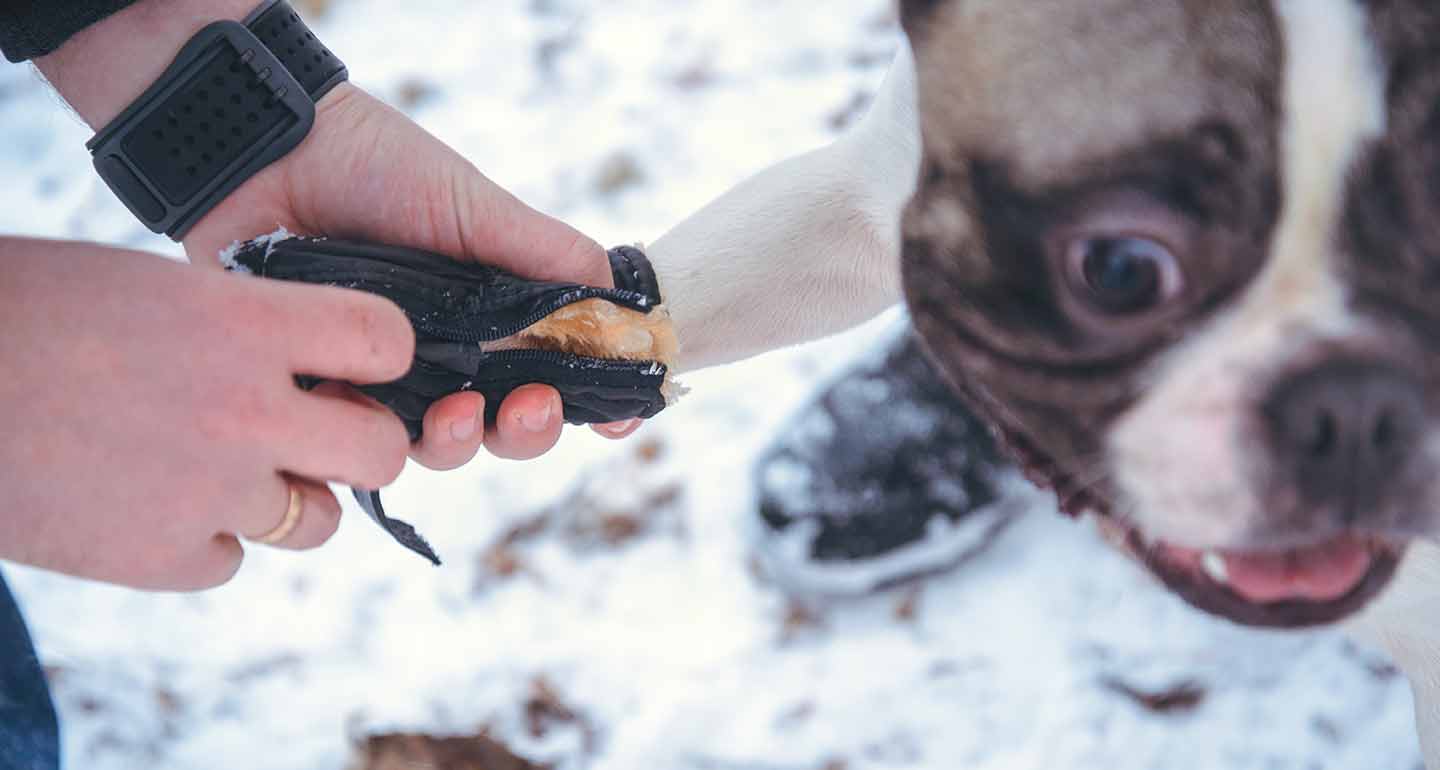
iStock.com/Vera_Petrunina
Booties and Paw Protection
Miss Cleo won’t even entertain the idea of cat booties, but Sid might consider it, especially when we get a rare snowfall. That’s a good thing, because Dr. Romine says in very cold weather, paw protection is essential.
Booties, like Ultra Paws Dog Boots, are excellent options, she says, “as long as they are allowed to get used to them. They will usually walk very oddly at first until they understand the feeling of having them on.”
Wax products, such as Musher’s Secret Paw Protection natural dog wax, can be applied directly to the paws for protection, Dr. Romine adds. “They protect against the salt and cold, and help with the ice accumulation,” she says.
Even dogs who are acclimated to the cold weather and do not need winter coats can be at risk of frostbite, so it’s critical to keep an eye on their unshod paws, she says.
“Breeds with fluffy hair around their toes like Huskies can handle more cold, but they should still be monitored, especially when walking on sidewalks and asphalt,” Dr. Romine says.
Check for accumulated ice balls, which can be uncomfortable to walk on, and avoid walking on freshly salted walkways because the salt can be corrosive to paws, she says.
Food and Water
Staying well hydrated and belly-filled in cold temperatures can help outdoor cats and dogs keep warm too, Dr. Romine says.
In frigid areas of the country where water in a dish frequently freezes into an ice cube, pet parents should check it regularly to ensure their dog or cat has access to fresh, liquid water.
“Water supplies need to be checked at least twice daily to be sure the supply isn’t frozen, knocked over or contaminated,” she says. “Heated water bowls are available but be sure to watch the quality of the electrical cord. Be sure the outlet and cord are protected from moisture, and that the dog or cat cannot chew the cord.”
Because cats and dogs expend more energy as they’re keeping their body warm, consider adding a bit more kibble to their diets, Dr. Romine says.
“Most dogs, for example, are most comfortable between about 65 degrees [ Fahrenheit] and 85 degrees [Fahrenheit]” she says. “Below about 65, dogs will have to spend some energy to maintain their body heat …. On average, the metabolic rate increases by about five calories per pound of body weight per degree Fahrenheit (about 10 calories per degree Celsius) if they are inactive or resting. That means they might have up to a 100 percent increase in metabolism if left in 40 degrees [Fahrenheit] weather for a prolonged period of time.”
To make sure you’re giving your pals enough calories, ask your veterinarian for specific feeding recommendations.

iStock.com/martin-dm
Cold Weather, Warm Pets
On really, really frigid days, the risk of hypothermia is a real thing. Dr. Romine says to keep an eye out for signs like shivering or trembling, slowing down or a reluctance to walk, seeming weak or walking “drunk,” or seeking warm places to burrow and hide.
“If these are seen, the pet needs to be taken into a heated environment and warmed with blankets,” she says. “Hot water bottles can be used but be sure to keep a few layers of protection between the pet and the heat source, and allow them room to move away from the heat, to prevent contact burns.”
Long before that happens, Miss Cleo and Sid will snuggle with us inside next to the wood stove. But thanks to Dr. Romine’s advice, I understand how to keep outside dogs warm in winter and how to keep outside cats warm in winter—particularly when temperatures are relatively mild.
Read more:
Share:
